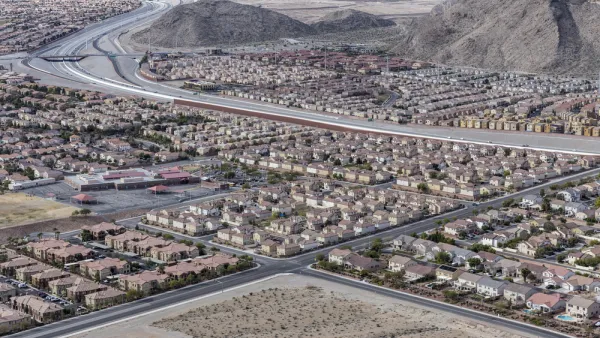"The comeback of the urban core is a striking reversal of long-term trends," proclaims Richard Florida. Although this rebound is good for urban growth and prosperity, it hasn't been able to solve enduring problems of poverty and disadvantage.
"The urban rebound is real," says Florida. "America’s urban cores and downtowns have become centers of innovation, growth, and consumption. The comeback of the core is a good thing—a very good thing—in that it provides the resources and capital that are required to create jobs, generate a viable tax base, improve living standards, and create deeper, more longer-lasting urban growth and prosperity."
"But America’s ongoing urban comeback is far from complete," he adds. "Isolated islands of prosperity remain surrounded by seas of distress and disadvantage."
Through a series of maps indicating the concentrations of America's three main socioeconomic classes in several cities, Florida traces "the striking class divides" that have accompanied this reversal. "Even as the urban core has rebounded and regenerated, large swaths of poverty, concentrated disadvantage, and urban distress continue to exist in a hidden, almost parallel dimension that is ignored by or invisible to many politicians, developers, and new urbanites."
"The next and perhaps greater urban challenge is to extend the benefits of rejuvenating cores to a far broader swath of people and neighborhoods," Florida argues. "We need to put equal if not greater effort into ensuring that the people and communities that are falling behind—still a clear majority in most cities—can participate in and benefit from this ongoing urban transformation."
FULL STORY: Comeback City, Divided City

National Parks Layoffs Will Cause Communities to Lose Billions
Thousands of essential park workers were laid off this week, just before the busy spring break season.

Retro-silient?: America’s First “Eco-burb,” The Woodlands Turns 50
A master-planned community north of Houston offers lessons on green infrastructure and resilient design, but falls short of its founder’s lofty affordability and walkability goals.

Delivering for America Plan Will Downgrade Mail Service in at Least 49.5 Percent of Zip Codes
Republican and Democrat lawmakers criticize the plan for its disproportionate negative impact on rural communities.

Test News Post 1
This is a summary

Test News Headline 46
Test for the image on the front page.

Balancing Bombs and Butterflies: How the National Guard Protects a Rare Species
The National Guard at Fort Indiantown Gap uses GIS technology and land management strategies to balance military training with conservation efforts, ensuring the survival of the rare eastern regal fritillary butterfly.
Urban Design for Planners 1: Software Tools
This six-course series explores essential urban design concepts using open source software and equips planners with the tools they need to participate fully in the urban design process.
Planning for Universal Design
Learn the tools for implementing Universal Design in planning regulations.
EMC Planning Group, Inc.
Planetizen
Planetizen
Mpact (formerly Rail~Volution)
Great Falls Development Authority, Inc.
HUDs Office of Policy Development and Research
NYU Wagner Graduate School of Public Service





























